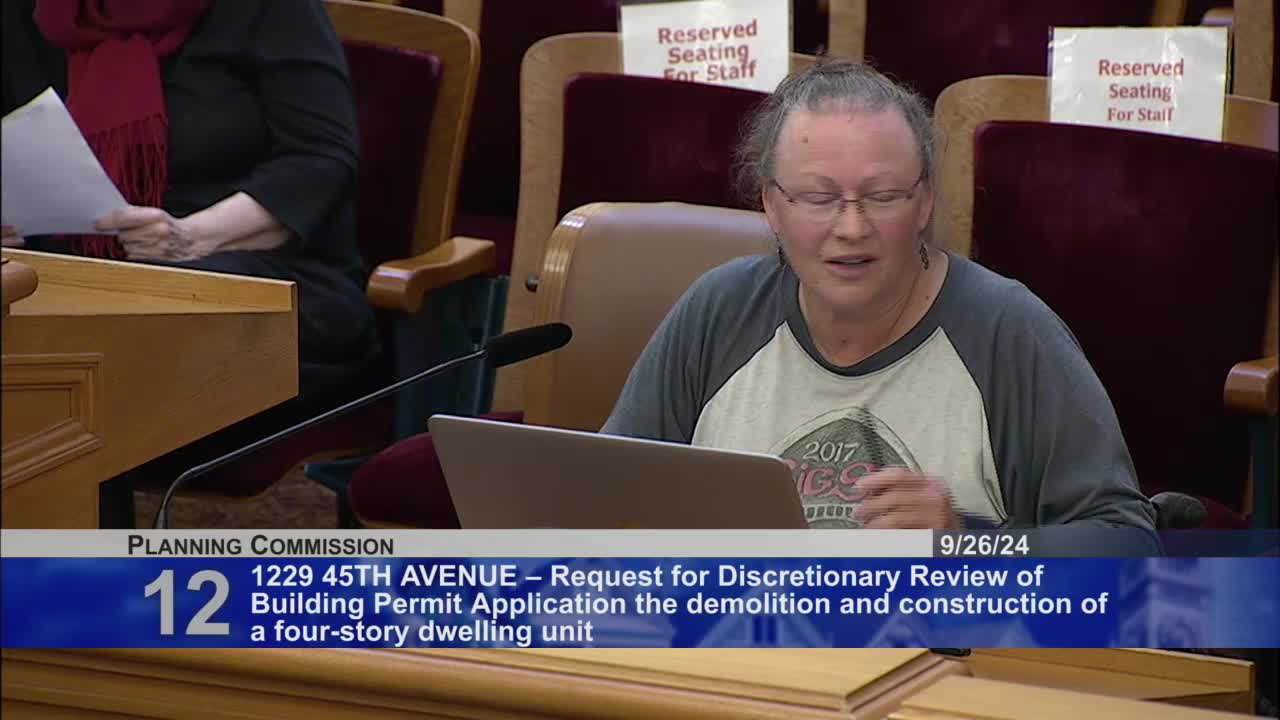Controversial ADU Project Sparks Heated Community Debate
September 26, 2024 | San Francisco County, California
This article was created by AI summarizing key points discussed. AI makes mistakes, so for full details and context, please refer to the video of the full meeting. Please report any errors so we can fix them. Report an error »

In a recent government meeting, discussions centered around a proposed accessory dwelling unit (ADU) project that has sparked significant community interest and concern. The project, which involves the construction of a new building alongside an existing historic cottage, has raised questions regarding compliance with local zoning regulations and the potential impact on the neighborhood.
Several community members voiced their opinions, highlighting the complexities surrounding the ADU's size and its fit within the existing residential landscape. One resident pointed out that the proposed structure, at 2,600 square feet, exceeds typical neighborhood dimensions, which generally range from 1,100 to 1,300 square feet. Concerns were also raised about the building's height and proximity to neighboring properties, with some arguing that it would obstruct light and views from adjacent homes.
Supporters of the project, however, argued for its potential benefits, emphasizing the need for increased housing options in the area. They noted that the project adheres to local ADU regulations and could provide much-needed rental units. The project sponsor clarified that the intent is to preserve the historic cottage while also ensuring the new construction meets city standards.
Commissioners engaged in a thorough deliberation, weighing the community's concerns against the city's housing goals. Questions were raised about the necessity of maintaining a garage in the new design, with some commissioners suggesting that removing it could better align the project with typical ADU configurations. Others expressed sympathy for the neighbors' concerns about light and privacy but acknowledged that such conditions are common in urban settings.
As the meeting concluded, the commission was tasked with making a decision on the project, balancing the need for housing development with the preservation of neighborhood character and historical significance. The outcome remains to be seen, but the discussions reflect ongoing tensions between development and community interests in urban planning.
Several community members voiced their opinions, highlighting the complexities surrounding the ADU's size and its fit within the existing residential landscape. One resident pointed out that the proposed structure, at 2,600 square feet, exceeds typical neighborhood dimensions, which generally range from 1,100 to 1,300 square feet. Concerns were also raised about the building's height and proximity to neighboring properties, with some arguing that it would obstruct light and views from adjacent homes.
Supporters of the project, however, argued for its potential benefits, emphasizing the need for increased housing options in the area. They noted that the project adheres to local ADU regulations and could provide much-needed rental units. The project sponsor clarified that the intent is to preserve the historic cottage while also ensuring the new construction meets city standards.
Commissioners engaged in a thorough deliberation, weighing the community's concerns against the city's housing goals. Questions were raised about the necessity of maintaining a garage in the new design, with some commissioners suggesting that removing it could better align the project with typical ADU configurations. Others expressed sympathy for the neighbors' concerns about light and privacy but acknowledged that such conditions are common in urban settings.
As the meeting concluded, the commission was tasked with making a decision on the project, balancing the need for housing development with the preservation of neighborhood character and historical significance. The outcome remains to be seen, but the discussions reflect ongoing tensions between development and community interests in urban planning.
View full meeting
This article is based on a recent meeting—watch the full video and explore the complete transcript for deeper insights into the discussion.
View full meeting
